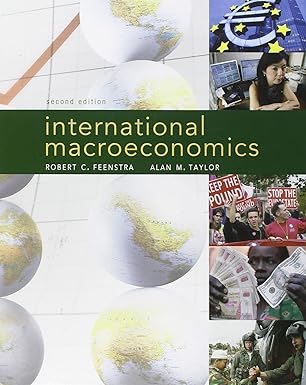7. Consider two countries: Japan and Korea. In 1996 Japan experienced relatively slow output growth (1%), while
Question:
7. Consider two countries: Japan and Korea. In 1996 Japan experienced relatively slow output growth (1%), while Korea had relatively robust output growth (6%). Suppose the Bank of Japan allowed the money supply to grow by 2%
each year, while the Bank of Korea chose to maintain relatively high money growth of 12%
per year.
For the following questions, use the simple monetary model (where L is constant). You will find it easiest to treat Korea as the home country and Japan as the foreign country.
a. What is the inflation rate in Korea? In Japan?
b. What is the expected rate of depreciation in the Korean won relative to the Japanese yen (¥)?
c. Suppose the Bank of Korea increases the money growth rate from 12% to 15%. If nothing in Japan changes, what is the new inflation rate in Korea?
d. Using time series diagrams, illustrate how this increase in the money growth rate affects the money supply MK, Korea’s interest rate, prices PK, real money supply, and Ewon/¥ over time. (Plot each variable on the vertical axis and time on the horizontal axis.)
e. Suppose the Bank of Korea wants to maintain an exchange rate peg with the Japanese yen. What money growth rate would the Bank of Korea have to choose to keep the value of the won fixed relative to the yen?
f. Suppose the Bank of Korea sought to implement policy that would cause the Korean won to appreciate relative to the Japanese yen. What ranges of the money growth rate (assuming positive values)
would allow the Bank of Korea to achieve this objective?
Step by Step Answer:

International Macroeconomics
ISBN: 978-1429241038
2nd Edition
Authors: Robert C. Feenstra ,Alan M. Taylor





